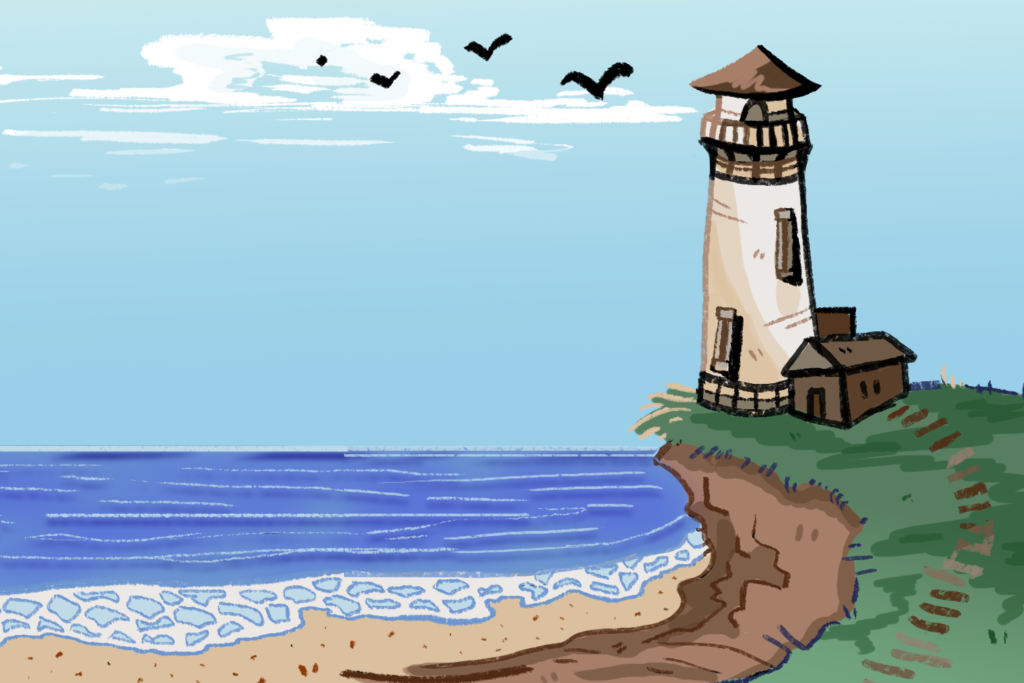Author’s note: Andy Robinson is a volunteer for the United States Lighthouse Society’s Lighthouse Passport Program and the President of the California Lighthouse Society, organizations dedicated to preserving and raising awareness of lighthouses on a local and national level. He also recorded a podcast introducing the society to the world and elaborating on his love for lighthouses.
For a long time, I couldn’t tell you exactly why I loved lighthouses. Maybe it was their architecture that caught my attention: a delightful mix of Victorian stick structures, soaring sentinels and cozy Cape Cod cottages, often topped with a circular lantern housing an intricate lens. Perhaps it was their stunning coastal locations, perched atop towering bluffs and beside spectacular mountain ranges. Most likely, it is the community of people passionate about the structures that helped me maintain my interest for nearly 10 years.
Despite this communal strength, the lighthouse — symbolic of human resilience and spirit, of safety and security — is in danger of being discarded and forgotten. Without a new, younger generation of “lighthouse keepers” to preserve and protect California’s lighthouses, we risk losing a chain of cultural and historical centers.
When I first saw a lighthouse in a cartoon, I asked my parents for a picture book of the structures. I remember flipping through its pages, waiting for my chance to finally see one in person. Soon after, my parents and I began to explore local lighthouses from Point Pinos in Monterey to Pigeon Point, south of Half Moon Bay. I’ll never forget the joy I experienced when I first rounded the bend on U.S Highway 1 and saw the Pigeon Point Lighthouse come into view — I couldn’t unbuckle my seatbelt fast enough.
Over time, as I began to visit more lighthouses throughout the state, I found a dedicated community of lighthouse preservationists, aficionados and volunteers. At every lighthouse I visited, I found people excited to share their passion with someone who saw the buildings as invaluable as I did.
The lighthouse — symbolic of human resilience and spirit, of safety and security — is in danger of being discarded and forgotten.
But as I interacted more with the community, I quickly noticed a stark age difference between myself and fellow lighthouse fans. Most I found were far older than me, with the vast majority over the age of 60. Many of those passionate about lighthouses once worked in the Coast Guard, came from families dependent on maritime commerce or even worked as lighthouse keepers. However, with the advent of GPS and other technologies, traveling by water is far safer, often negating the need for lighthouses entirely. As such, many young people have little understanding of the true importance of lighthouses.
But lighthouses remain an essential element of local economies dependent on tourism and continue to educate and excite people about local history. The dramatic coastal locations of many of California’s lighthouses attract visitors, with their open-air settings providing a perfect weekend getaway. Ensuring their preservation as tourist attractions brings increased resources to remote coastal communities. For example, the Point Cabrillo Lighthouse in Mendocino County was lovingly restored, and is now one of the top destinations on the Mendocino coast. When I visited I fondly remember eagerly running down the headland towards the lighthouse, watching as a string of cars piled into the parking lot. Clearly the lighthouse’s tourism campaign was a resounding success.
However, this task proves to be increasingly difficult as California lighthouses also face new challenges: rising sea levels, droughts and fires. The drought is so extreme in some coastal California towns that water is now trucked in. According to Jen Lewis, fundraising and outreach manager for Point Cabrillo Lighthouse, the adjacent vacation rentals that help fund the lighthouse are dependent on a steady supply of water, which may deplete throughout the drought. Marveling at the prisms of the lens at the top of the lighthouse and exploring the cavernous gift shop shelves is a memory that will stay with me forever, and tourists, the local community and I would be heartbroken to know that the lighthouse will not last if the property lost out on key revenue and slowly deteriorated.
Fortunately for the Point Cabrillo Lighthouse, the site has maintained high visitation and has made it through the past summer unscathed, but other lighthouses in California may not be so lucky. Visiting Point Reyes, a historic and well-visited lighthouse in Marin County, I witnessed firsthand the dry, golden brown fields that line the coastal headlands. When we went into the local town, called Point Reyes Station, we noticed ominous “conserve water” signs in every establishment. The day that the town runs out of suitable drinking water could mark the end for the Point Reyes tourism industry.
We need more young people with diverse perspectives on climate change, community activism and an appreciation for local history to get involved.
And regardless of the effects of climate change, many lighthouses are in danger of being lost forever without our help. East Brother Lighthouse, an elaborate Victorian structure in the middle of the San Francisco Bay, recently lost the cable supplying its power and is in the process of fundraising for a more permanent solution. Without this cable, the lighthouse, which currently functions as a Bed & Breakfast, risks losing out on key revenue.
Lighthouses need people like me to survive. We need more young people with diverse perspectives on climate change, community activism and an appreciation for local history to get involved. I hope if you find any meaning in my story, you’ll consider visiting a local lighthouse. And don’t forget to leave a donation.
Explore this map of California’s Lighthouses:



